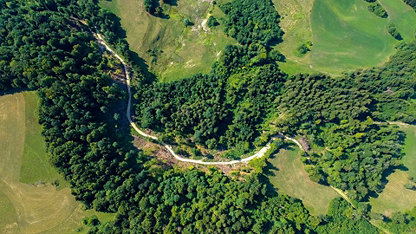The valuation of development property has always had more uncertainties attached to it than valuing standing investments. In the current climate with the slowing down of global economies, the valuation of development property carries even more uncertainties. At a recent RICS webinar How can valuers mitigate the risk in valuation of development property during COVID-19? Professionals discussed how to approach the issue.
Material uncertainty clause
RICS issued a valuation alert about material uncertainty in the market so that valuers can provide clients with an understanding of the level of confidence with which figures are produced. Volatility and difficulties with price discovery are inevitable in the current climate but the valuation alert is ‘about disclosure not disclaimer’ says RICS global valuation standards director Ben Elder.
A development land valuation is fundamentally about an assessment of what will happen in the future. The current expectation is that the changes may not be just cyclical but structural. It is not just a different volume of activity in the same pattern of economic life, but potentially a completely different pattern of activity based on changes as yet unknown, in the way we behave socially and economically. In this context, the uncertainty associated with the various assumptions that are required to undertake development land valuations have now been amplified multiple times.
Advice for practitioners
The question is how do we make sense professionally of what is happening now and what is being suggested may happen in the future and provide helpful advice to clients and those who rely on reports produced by RICS professionals? How do we do this without going beyond what reasonably can be supported by the evidence?
One of the webinar panellists Robert Fourt of Gerald Eve offers three key points when putting valuation reports together:
- Follow guidance, it’s all about process, process, process. Refer to these two critical guidance notes in valuation reports: Valuation of development property and Comparable evidence in real estate valuation
- Get as much evidence as you can.
- Be careful how you set out your opinion. Use different scenarios and simulations. Transparency is the watchword. Be very clear what you’re doing and anchor your report in time and context. Beware of informal advice, which can be construed as formal in court cases.
The challenges will vary around the world and in different sectors. The structural changes being accelerated in retail and being spoken about in new patterns of office occupation will be different to those in residential. Understanding them will still rely on professional judgment and it remains to be seen what the new market norms will look like following the COVID-19 crisis. What is certain however, is that consistency of approach, transparency on assumptions and inputs, and effective communication of risk and uncertainty will remain critical to confidence in the profession.
Places such as Hong Kong that have experienced the Asian Financial Crisis over 20 years ago and the SARS epidemic, may now have developed a certain resilience to such shocks. Events such as these may now have been subliminally built into their risk assessments. Elsewhere more specific risk premiums may apply because of uncertain user demand or indeterminate construction costs. Scenario testing and sensitivity analysis will now move centre stage.
Harvard psychologist Steven Pinker believes there is a powerful urge in human beings to return to the norm which may provide solace for those who believe everything will be the same again. That was what happened more or less after the Global Financial Crisis, but this time will it be different?
About the author

Tony Mulhall MRICS
Associate Director Land Professional Group, London, UK, RICS
Tony Mulhall is responsibile for the Planning and Development Professional Group, which has 22,000 members worldwide. As a chartered surveyor and town planner he worked across planning and property disciplines in both the public and private sectors. He graduated in Surveying and Planning in Dublin and also holds Masters degrees from the University of York and from Cass Business School, City University, London.















